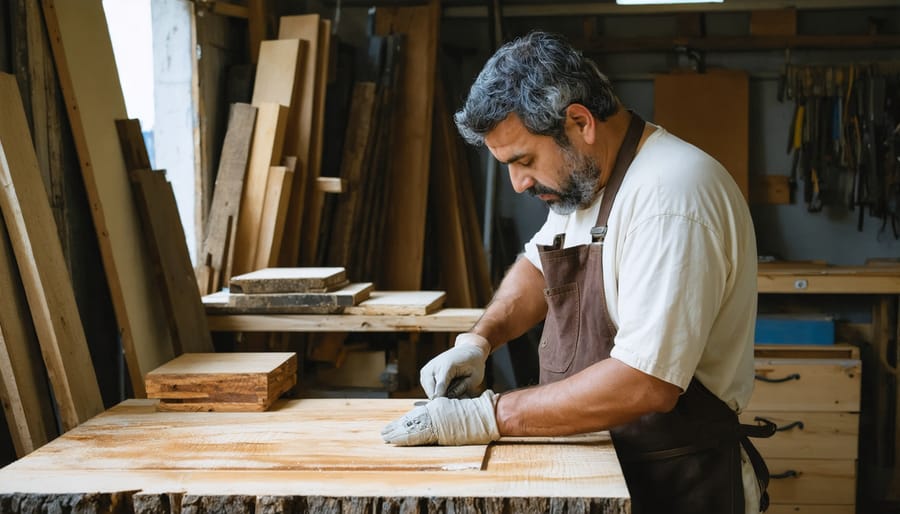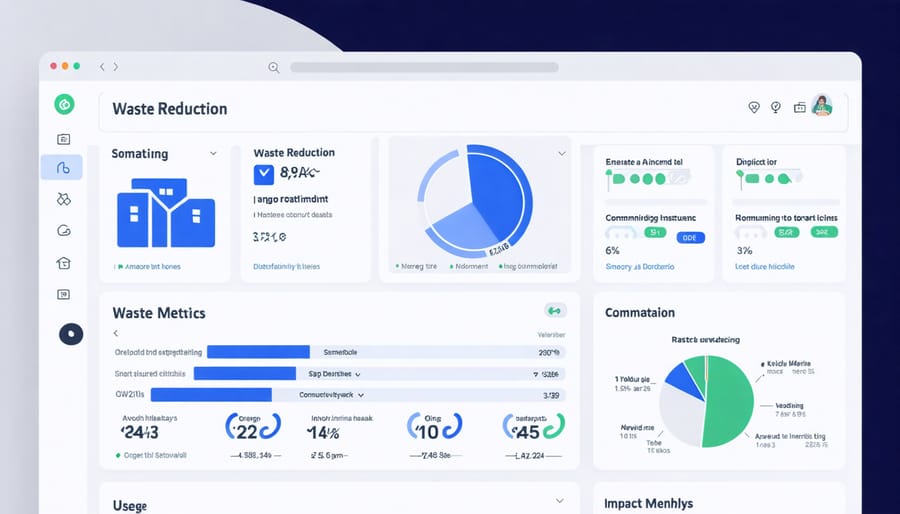
Smart Home Design That’s Fair for People and Planet
Transform your home improvement projects into forces for positive change by embracing just sustainability – where eco-friendly practices meet social responsibility. Start by sourcing local, ethically-made materials that support community craftspeople while reducing transportation emissions. Choose suppliers who prioritize fair labor practices and sustainable harvesting methods, ensuring your beautiful spaces don’t come at the cost of environmental or social harm. Smart home features like programmable thermostats and LED lighting systems not only slash energy bills but create healthier living environments for everyone, from contractors to residents.
Just sustainability isn’t just about green materials or energy efficiency – it’s about creating spaces that work for all people while preserving our planet’s resources. Whether you’re renovating a kitchen or redesigning an entire home, every choice matters: from selecting non-toxic finishes that protect indoor air quality to installing water-saving fixtures that help conserve community resources. Make your next project a testament to both environmental stewardship and social equity.
What Makes Home Projects ‘Justly Sustainable’?
Environmental Impact
Just sustainability places a strong emphasis on environmentally conscious choices in materials and construction methods. By following eco-friendly design principles, homeowners can significantly reduce their carbon footprint while creating beautiful, lasting spaces. This approach prioritizes renewable materials like bamboo flooring, recycled glass countertops, and low-VOC paints that minimize indoor air pollution.
Energy efficiency plays a crucial role through the integration of smart thermostats, LED lighting, and proper insulation. Water conservation features, such as low-flow fixtures and drought-resistant landscaping, help preserve precious resources. Additionally, sustainable practices include proper waste management during renovations, choosing locally sourced materials to reduce transportation emissions, and implementing energy-efficient appliances that lower long-term environmental impact while reducing utility costs.
By making these conscious choices, homeowners contribute to environmental preservation while creating healthier living spaces for their families.

Social Responsibility
Social responsibility in just sustainability extends beyond environmental concerns to encompass fair labor practices and positive community impact. When sourcing materials and hiring contractors for your home projects, prioritize companies that provide fair wages, safe working conditions, and ethical business practices. Look for suppliers who maintain transparent supply chains and support local communities through job creation and economic development.
Consider the broader impact of your home improvement choices on your neighborhood. Using local contractors and materials not only reduces transportation emissions but also strengthens the local economy. Many sustainable building materials are produced by companies with strong social responsibility programs, offering fair trade products and supporting community initiatives.
Before starting any project, research the social impact of your material choices and contractors. Many certification programs now include social responsibility criteria alongside environmental standards, making it easier to make informed decisions that benefit both people and planet.
Practical Steps for Just Sustainability at Home
Sourcing Fair-Trade Materials
Sourcing fair-trade materials is a crucial step in creating a truly sustainable home improvement project. Start by researching suppliers who have Fair Trade certification or other recognized ethical sourcing credentials. Look for companies that provide detailed information about their supply chain and maintain transparency about their sourcing practices.
Local hardware stores and specialty suppliers are increasingly stocking fair-trade options for common materials like wood, textiles, and decorative items. When shopping, look for labels that indicate fair labor practices, sustainable harvesting methods, and proper worker compensation. Many suppliers now offer digital tracking systems that allow you to trace materials back to their origin.
Online marketplaces dedicated to sustainable and fair-trade materials can be excellent resources. These platforms often provide detailed information about artisans and communities involved in production, helping you make informed choices. Consider joining sustainable building networks or local eco-friendly construction groups to share supplier recommendations and experiences.
For custom projects, work directly with artisans and craftspeople who source their raw materials ethically. This approach not only ensures fair-trade practices but often results in unique, high-quality pieces for your home. Remember to factor in the true cost of materials – fair-trade items may cost more upfront, but they support sustainable practices and often offer superior durability and craftsmanship.

Working with Local Artisans
Working with local artisans not only supports your community’s economy but also ensures unique, high-quality craftsmanship in your sustainable home projects. These skilled professionals often use traditional techniques passed down through generations, combined with modern sustainable practices, creating pieces that are both environmentally conscious and culturally significant.
Start by researching local craft guilds, artisan markets, and maker spaces in your area. Many craftspeople showcase their work through these networks, making it easier to find the right match for your project. When reaching out, be clear about your sustainability goals and ask about their sourcing practices for materials.
Consider commissioning custom pieces that serve multiple purposes – like storage solutions crafted from reclaimed wood or decorative screens made from sustainable materials. Local artisans can often work with salvaged materials you’ve collected, giving new life to old items while creating something uniquely yours.
Building relationships with local craftspeople offers long-term benefits. They can provide maintenance tips, make repairs when needed, and offer insights into sustainable materials and techniques. Many artisans also welcome collaboration, allowing you to be part of the creative process and ensure the final piece aligns perfectly with your vision.
Remember to factor in lead times for custom work and be prepared to invest more compared to mass-produced alternatives. The higher initial cost supports fair labor practices and results in pieces that typically last longer and hold their value better over time.
Technology and Innovation in Just Sustainability
Smart Home Features
Smart home technology has revolutionized how we approach sustainability in our living spaces. Modern homes can now feature automated systems that optimize energy usage while improving comfort and convenience. Smart thermostats learn your schedule and adjust temperatures automatically, reducing unnecessary heating and cooling. LED lighting systems with motion sensors ensure lights are only on when needed, while smart plugs can cut power to devices that would otherwise draw standby energy.
Water conservation becomes effortless with smart irrigation systems that monitor weather patterns and soil moisture, watering your garden only when necessary. Smart meters provide real-time feedback on energy consumption, helping households make informed decisions about their usage patterns. These features not only reduce environmental impact but also create cost savings that benefit the entire community.
Integration of solar panels with smart inverters maximizes renewable energy usage, while automated window shades can help regulate indoor temperatures naturally. Many of these technologies can be controlled through a single smartphone app, making sustainable living more accessible and manageable for everyone. The beauty of smart home features lies in their ability to create both individual and collective benefits, perfectly embodying the principles of just sustainability.

Waste Reduction Solutions
Reducing waste in home projects starts with smart planning and resourceful thinking. Before demolition, consider what materials can be salvaged and repurposed. Old cabinets can become garage storage, while intact tiles might work perfectly in a mudroom or outdoor space. Create a detailed materials list and buy only what you need, adding a modest 10% overage for cuts and mistakes rather than the traditional 20%.
Set up designated areas for material sorting during your project: one for reusable items, another for recyclables, and a third for actual waste. Many communities have construction material recycling programs that accept everything from drywall to metal fixtures. For larger renovations, consider renting a small dumpster specifically for recyclable materials.
Digital planning tools can help minimize waste by calculating exact measurements and material needs. When possible, choose standard sizes that require fewer cuts and create less waste. Save usable scraps for future projects or donate them to local schools, theater groups, or craft organizations. Even sawdust can be composted or used as mulch in garden projects, ensuring virtually nothing goes to waste.
Cost Considerations and Long-Term Benefits
While the initial investment in just sustainability practices may seem higher than conventional approaches, the long-term benefits often outweigh these upfront costs. Smart sustainable project planning can help you identify areas where eco-friendly choices deliver the best return on investment.
Energy-efficient appliances and systems typically pay for themselves within 3-5 years through reduced utility bills. Solar panels, while requiring significant initial investment, can reduce or eliminate electricity costs over their 25-30 year lifespan. Similarly, water-saving fixtures and smart irrigation systems can cut water bills by 30-50% annually.
The use of sustainable materials often results in lower maintenance costs and longer replacement cycles. For example, bamboo flooring and recycled composite decking materials typically last longer than traditional alternatives, reducing long-term replacement expenses.
Property values also benefit from sustainable features, with green-certified homes commanding premium prices in many markets. Studies show that homes with sustainable features sell faster and at higher prices, sometimes up to 10% more than conventional properties.
Tax incentives and rebates can significantly offset initial costs. Many local and federal programs offer financial assistance for energy-efficient upgrades, solar installations, and other sustainable improvements. When combined with utility savings and increased property value, these incentives make just sustainability practices not just environmentally responsible, but financially smart.
Remember to factor in the social benefits too – creating healthier living spaces, supporting local economies, and contributing to community well-being all add value beyond pure financial returns.
Just sustainability isn’t just another trendy concept – it’s a crucial approach that brings together environmental responsibility and social justice in our everyday home improvements and design choices. By embracing these principles, we can create spaces that are not only beautiful and functional but also contribute to a more equitable and sustainable future.
Remember, every choice matters – from selecting eco-friendly materials and working with local craftspeople to ensuring fair labor practices in your renovations. Start small by incorporating energy-efficient solutions, choosing sustainable materials, and supporting local businesses. Consider the long-term impact of your home improvement decisions on both the environment and your community.
Take action today by assessing your current projects through the lens of just sustainability. Ask yourself: Does this choice support both environmental and social goals? Are there ways to make this project more inclusive and sustainable? By making conscious decisions and encouraging others to do the same, we can create lasting positive change in our homes and communities.
The path to just sustainability starts with you, one thoughtful home improvement decision at a time.
